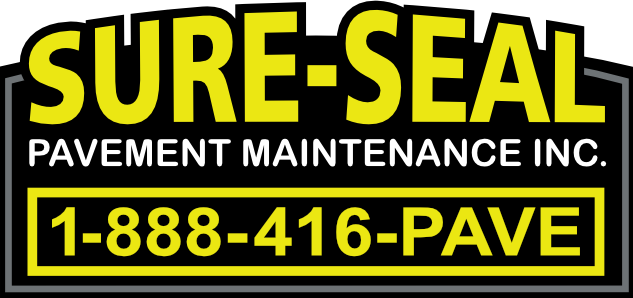Potholes are the bane of every property owner’s existence. Not only are they unsightly and off-putting, but once they start forming, they can easily spread like weeds in a garden, especially if your asphalt parking lot gets a lot of heavy traffic. Caused by a combination of factors including inclement weather conditions, sudden temperature fluctuations, and constant pavement usage among other things, the cost of repairing potholes can sometimes far outweigh the cost of preventing them in the first place. It’s important that you administer proper asphalt maintenance tactics at all times to prevent potholes from forming or getting worse over time.
The longer you neglect to fix a pothole, the more expensive it’ll be to maintain your asphalt pavement over time. Luckily, there are plenty of effective preventative measures you can take ahead of time to avoid these potentially exorbitant repair costs.
What Causes Potholes?
A number of structural and external problems can cause pothole formations in your asphalt pavement. Oftentimes, these factors are unavoidable, but that doesn’t mean there’s nothing you can do about it.
External forces like harsh weather conditions (rainfalls, snowfalls, hail, etc.) can slowly chip away at your asphalt’s durability, which is why it needs constant care and protection. Extreme weather conditions such as those experienced throughout different Canadian provinces and territories coupled with constant usage can cause damages. Potholes typically start off as small cracks that eventually expand over time as an increasing amount of water and debris permeate the surface. The heavy weight of vehicles driving over them can also cause jagged edges of the asphalt to fall off over time.
Preventative Measures You Can Implement
When it comes to protecting your asphalt pavement from damages, it’s far more cost-efficient and convenient to take on a proactive approach rather than a reactive one. That entails anticipating any potential problems or damages and taking active steps to prevent them from happening. Some preventative measures you can take to avoid or prolong pothole formations include:
Crack Overbanding
Essentially, crack overbanding entails flush filling the crack in with a strong sealant and then adding an additional layer of sealant on top and on the sides to prevent water permeation from undoing or damaging the first layer. For the sake of comparison, it’s almost like when you overfill a glass of water and the water spills over the sides or when you apply too much glue to two pieces of construction paper and the glue seeps out from the sides of the paper when they’re pressed together. Crack overbanding is the same basic concept except it’s done on purpose to fully seal the asphalt crack.
Crack overbanding is a cost-effective long-term fix that’s typically used on tarmacadam surfaces, which are asphalt pavements that are composed of tar and sand using the macadam construction method (think airport tarmacs/runways).
Crack Sealing
Much like crack overbanding, sealing also involves filling in the crack using an asphalt aggregate-based sealant. The main difference is the application technique and the materials in the aggregate.
Regular crack sealant contains bitumen as the main bonding agent, not tar. Also, this process doesn’t involve overflowing the amount of sealant used. Sealant is only applied until it reaches the highest point of the crack, no more and no less. The sealant is made to bond perfectly with the existing pavement to prevent further damage and water or debris permeation.
Proper Water Drainage
It’s important to make sure that your catch basin is always in excellent working condition. Any blockage or damages could prevent water from completely draining off of your property. Standing or pooling water can eventually erode your asphalt surface, causing potentially expensive internal and external structural damages.
Puddles might be fun to play and splash around in, but they’re actually a serious sign that there may be something wrong with your asphalt pavement’s drainage system and they need to be addressed immediately. Large dips in your pavement not only signify extensive water damage, but they can also cause property flooding as well.
Effective Pothole Repair Methods
As mentioned, it’s always better to have a proactive rather than reactive approach to dealing with potholes and that includes sealcoating your asphalt parking lot every two to three years to prevent damages. But, there are certain reparative methods you can employ to rid your property of existing potholes.
Throw-and-Roll Pothole Repair
This is a temporary solution for repairing potholes, but it’s still effective enough to last you a long time. Ideally, the throw-and-roll method should only be used in harsh weather conditions when other more long-lasting methods are impossible to implement.
The throw-and-roll method has three simple steps:
- Purchase or make a cold mix asphalt patch and place it inside the pothole.
- Compact the patch materials inside the pothole by driving over it with a heavy vehicle (a truck or bulldozer) until it’s even and smooth.
- Compact the cold mix until it’s level with the pavement.
This method should last you long enough until you can apply a more permanent solution.
Semi-Permanent Pothole Repair
Start by thoroughly removing all water and debris from the pothole. Next, square off the edges of the pavement until you reach a depth where it’s structurally strong. The patch material can then be placed in the hole and should be tightly and evenly compacted using a vibratory plate compactor or single drum vibratory rollers.
Spray Injection Pothole Repair
Spray injection pothole repair is a quick, easy, and affordable long-term solution. A self-contained truck mounted system is used to thoroughly clean out the patch area, removing all water and debris. Using the same truck, a thick binder is sprayed along the bottom and the sides of the patch area. After that, the next step is to spray or blow a layer of asphalt and aggregate directly into the pothole. Lastly, the pothole is covered with a dry coat of asphalt and aggregate to promote a faster curing time, maximize durability, and reduce road disruptions. This technique requires no compaction and far less manual labour than the others.
Sure-Seal Pavement Maintenance Inc. is one of the leading asphalt maintenance and pothole repair companies in Toronto. With over 20 of experience and work that’s backed by a seven-year labour and material warranty, we guarantee high-quality results for your pavement. Contact us today to book an appointment.

